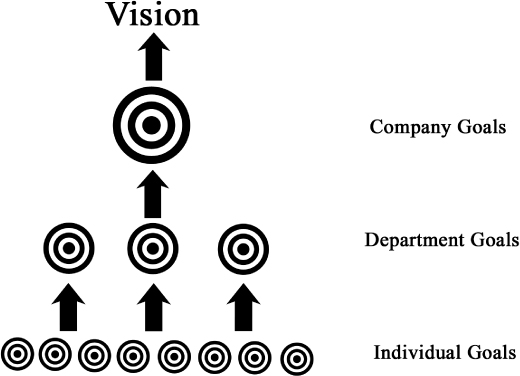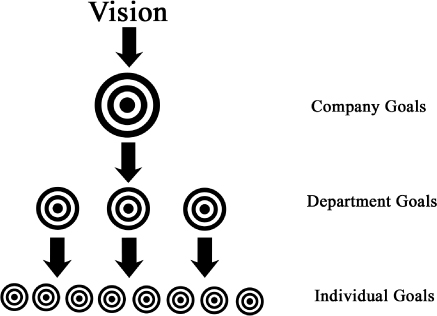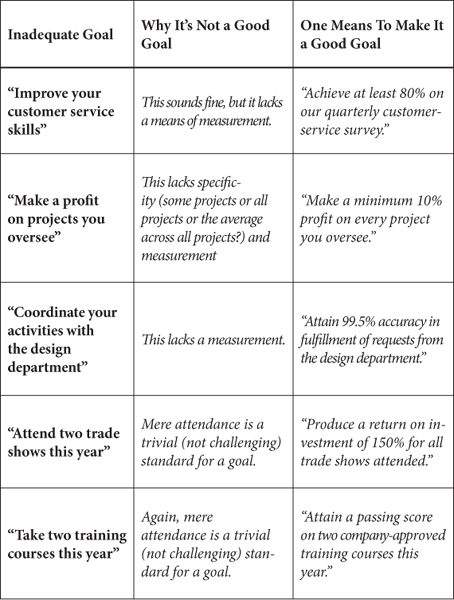Individual goals
Once you’ve created the company’s near-term goals, you need to use your resources efficiently to attain them. A key means of doing this is to ensure that each individual has goals that relate to your company goals. Here’s Mike again, talking about just that with one of his new employees.
As an excellent manager himself, Mike will work frequently with this new manager to ensure that he achieves his goals. Mike may only need to touch base with the manager for limited time each week, but his interactions will ensure that the manager’s actions are well directed and executed. We’ll talk more about these weekly “One-on-One” meetings in a later section; they’re an important factor in the success of a company such as Mike’s.
Now we can look at these goals from the other direction as described by Mike. When we add up everyone’s individual goals, they should achieve the company goals. And the company goals should move the company closer to the owner’s vision.
In a diagram, all the individual goals add first to the department or business unit goals, which collectively then add to the company goal. Achieving the company goal, created for perhaps only the current fiscal year, moves the company closer to the company vision. It looks like this:
Goals Move the Organization Toward the Vision

Here’s another way to think about all this. Imagine that you had a goal to place a heavy monument on top of a mountain. You knew that if you got all of your friends together to help that you could achieve this vision. But there wouldn’t be any place for slackers. Nobody could just look busy while not directly helping.
You might consider several ways to accomplish this. For example, you might build a road up to the top of the mountain and truck the monument to the top. Alternatively, you might merely clear a path, put the monument on a sledge, and pull it up by brute force. Finally, you might somehow acquire a helicopter, train someone to fly it, and airlift the monument to the top.
Regardless of which of these three strategies you chose, everyone in the group would have a specific position, with specific individual goals, to get the monument to the top. When everyone performed their role successfully, the overall goal would be achieved. Simple, huh?
As with the company goals, there should be clear criteria for establishing individual goals. Here they are (looking suspiciously like the criteria for company goals):
- Directly related to fulfilling the Company Goals.
- Challenging.
- Reasonable.
- Measurable.
- No more than three in total.
- Established at least yearly (and preferably more often).
Here are some examples of individual goals that do not meet the criteria. Once again, our job here is to turn these well-intentioned thoughts into solid unambiguous goals.
Let’s return now to the goals and vision diagram, reproduced below. When you craft company and individual goals (and perhaps department goals) that are pointed to your vision and that are all in alignment, you ensure that everyone in your organization is doing the right things to move you in the right direction.
Goals Move the Organization Toward the Vision



